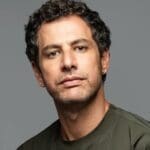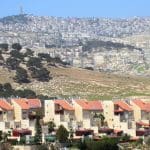
Israel has had a customs union trade arrangement with the Occupied Palestinian Territory (OPT) since 1967, a de facto situation that was institutionalized by the Oslo Accords in 1994. The customs union, which on the surface appears to simply be a trade arrangement, was and remains key to Israel’s containment of the OPT, a strategy in which Israel refuses to accept Palestinian sovereignty or to recognize their human rights in other final status arrangements, such as a single bi-national state. Al-Shabaka Policy Member Amal Ahmad argues that the customs union is the best illustration of Israel’s intention to maintain this de facto “no-state solution,” controlling the OPT manageably until it can completely swallow up the West Bank and East Jerusalem while leaving Gaza to its fate. She situates the customs union not only in the context of Israel’s policies in the OPT, but as a logical outcome of the Zionist project per se.
A Very Skewed Union
Trade regimes between nation states are either autonomous, implying that nation X has no trade obligations towards nation Y, or preferential, establishing low barriers between X and Y and binding them with reciprocal obligations and benefits. Customs unions are a form of preferential trade, although they take it one step further by establishing uniform barriers against the rest of the world, thereby harmonizing the external trade policy of the union’s member states. Israel and the Palestinian territory have been bound by a customs union de facto since 1967 and de jure since 1994.
Theoretically, a customs union carries mutual benefits to the member states. However, as the United Nations Conference on Trade and Development (UNCTAD) noted in a 1988 report, between 1967 and 1988 the customs union between Israel and the OPT treated the two economies as dualisms that entrenched the status quo, which, at that time, had established the OPT as a reservoir of cheap labor and Israel as a production and export powerhouse. Importantly, the arrangement allowed for the unrestricted flow of Israeli goods into the Palestinian economy. Since then, the state of the Palestinian economy has only worsened, and its dependence on imports from Israel has deepened. The economy is marked by industrial stagnation and the decline of other productive sectors, particularly agriculture, as well as growing trade deficits and a weak export base. The customs union has been key to this process of stagnation, keeping the Palestinian economy industrially weak, underdeveloped, and dependent on imports.
Such skewed results are to be expected given the vast asymmetry of productive capacity between Israel and the OPT. The harm to the Palestinian economy has been further magnified by Israel’s ability to impose at will, as the occupying military power, a one-sided and inconsistent implementation of the union.
Israel’s use of duty-free import quotas is a particularly egregious example of how Israeli actions have magnified the skewedness of the customs union (see the recent analysis by the Palestine Economic Policy Research Institute, MAS). As part of its free trade agreements with other countries, Israel is able to export a certain amount of its goods to country Z, duty free or at a discounted customs rate, while pledging to import a certain amount of goods from country Z at a similarly discounted rate. The goods Israel pledges to import from its partners are often agricultural commodities and food products, which otherwise enjoy a high level of commercial protection in Israel. Since signing the Paris Protocol in 1994, Israel has given the Palestinian Authority (PA) 20% of its import quotas. So, if Israel pledges to import 2,000 tons of milk from country Z duty-free, Palestinian retailers can apply for a license (given by Israel) to import up to 400 tons of that product duty-free. Obviously, this is advantageous for the Palestinian retailers who reap a profit margin by buying the imported milk for less while selling it at the same price.
However, the problem is greater than meets the eye. Israel gives Palestinians 20% of the import quota but none of the corresponding export quota. For example, if country Z pledges to buy 2,000 tons of tomatoes from Israel in exchange, 100% of these tomatoes come from Israeli producers. Effectively, then, Israel is using the Palestinian economy to divert pressure off its own market by reducing the penetration of cheap imports by 20%, while reserving the full benefits of export deals to itself. This example underscores Israel’s ingenious protectionist strategy and its use of the Palestinian economy simply as an appendage when convenient. Any benefit to Palestinians in the process is purely ad hoc and actually comes at the expense of productive industry.
No Way Out
Many analysts have, over the years, argued that if the implementation of the customs union were “better” or more in line with theory, then it would be optimal for the OPT’s trade and development. However, such calls to “rescue” or “modify” the union obfuscate the real problems facing the OPT, including the vicious cycle and vast asymmetry with its largest and most “free” trading partner, Israel.
In theory, two alternatives exist. The first alternative would involve a relatively closed (non-preferential) arrangement or an asymmetric free trade agreement. Such arrangements would restrict the access of Israeli imports to the Palestinian market by instating barriers (tariffs) against these imports, temporarily protecting Palestinian producers and encouraging industrial development. However, such arrangements, including a standard free trade agreement, involve rules of origin to distinguish which goods came from where and therefore require the presence of a hard border between the partners. In other words, such an arrangement could only be implemented in a post-conflict two-state solution scenario. The second alternative would be to keep trade open but under the auspices of a future single bi-national state that would be responsible for the wellbeing of both Israeli and Palestinian producers. Such a state would manage a common fiscal platform with targeted support for the backward areas, implying protection of Palestinian producers via fiscal transfer instead of external tariffs. Clearly, this option, too, could only be implemented in a post-conflict one-state solution scenario.
In practice, however, no alternatives exist. As shown above, all alternative arrangements, regardless of their economic merits, presuppose either the delineation of internal borders or their elimination, translating into either a sovereign Palestinian state or an integrated bi-national state. However, this policy brief argues that both these political scenarios undermine Israel’s strategic interests. All other trade arrangements, therefore, are off the table, regardless of economics, except for the one that requires neither borders nor integration: a customs union.
Indeed, the major benefit of the customs union to its Israeli architects has been the postponement of the border issue and keeping borders interim. Penetration into the Palestinian market is of minor importance to the Israeli economy and could have been achieved via other regimes such as a free trade area. The union, then, is a choice made out of political necessity rather than economic desirability. It illustrates that the only “solution” for Israel is a no-state solution where the Palestinians are neither sovereign nor integrated, but perennially contained, with repercussions across the political and economic spheres.
The Importance of Borders – or Lack Thereof
In the rest of the world, politics reflect underlying economic interests. However, in the OPT, economic arrangements reflect political interests, and to a perverse degree. Israeli interests are imposed through military power, which is why the Israeli military was the “economic” administrator of the OPT from 1967-1988 and remains the main Israeli point of liaison with today’s Palestinian administrators.
Indeed, the political border considerations of Oslo dictated the economic trade arrangements of the Paris Protocol: Given Israel’s insistence on precluding final status border arrangements, the customs union was the only viable option. Rather than an economically desirable choice, it was an outcome of political necessity for Israel, and there is substantial evidence that the Palestinian side was blackmailed into accepting the union after Israel threatened to stop Palestinian labor flow, as seen in the documents produced by the Ben-Shahar Committee and the Israeli government at the time.1 Furthermore, documents by the Bruno Committee as far back as 1967 attest to the far-reaching history of border considerations dictating “impure” trade integration of the OPT with Israel.2
Instead of elaborating on the potential significance to Palestinian trade of this political trajectory, the literature on the customs union has managed to ignore it altogether, preferring to keep the analysis “politics-free” beyond vague references to the Israeli occupation while focusing on post-conflict frameworks. In the case of the Palestinians, however, this should be the point of departure for analysis. Border considerations reflect strategic interests that offer the ultimate political economy context for the trade debate.
Not for nothing were the Oslo Accords, and, by extension, the Paris Protocol, incomplete and vague contracts that did not discuss many contingencies (the protocol is 35 pages compared to the 1,000+ page NAFTA) and were, most importantly, interim in nature. Several Palestinian economists, including Raja Khalidi as well as Adel Zagha and Husam Zomlot, point out that the economic problems in the OPT do not have an economic solution, and that the fundamental problem of the Paris Protocol is political.
What this policy brief argues is that the point of the protocol was not to give Israel the upper bargaining hand in final status, given that incomplete contracts favor the stronger party. The aim was to put off final status altogether in line with Israel’s policy since 1967. Further, this brief argues that the Zionist project lies at the heart of Israel’s desire for and design of an incomplete and interim contract with the OPT. Zionism’s desire for a Jewish majority and for differential national rights for Jews within that majority has, as Mushtaq Khan has argued, dictated a political reality in which the Israeli state cannot delink from the OPT but also cannot swallow it into a single state. A sovereign Palestinian state does not solve “the Palestinian problem” inside Israel, while one bi-national state defeats the Zionist national project outright. From a Zionist perspective, the best, or indeed only, solution to the Palestinian “problem” of demography and claim to rights, is a no-state solution, in which the Palestinians are contained manageably and in perpetuity. Israeli minister of economy Naftali Bennett recently explicitly expressed this as a “plan for peace.”
Thus, the customs union will persist so long as Israel’s interest in maintaining what could be termed “strategically absent” borders persists. This understanding helps to explain the historical endurance of an “economic” union that serves no rationale in theory and is full of contradictions in practice.
The relevance of this analysis to assessing developments in Israel-Palestine is illustrated by the recent controversy over customs stations. Customs stations are stations for collecting tariffs on imports. They are not supposed to exist in customs unions where trade between member states is supposed to be free. However, they are sometimes placed along an internal border to begin the transition to a free trade agreement or to more protectionist agreements. Some economists have long advocated the establishment of customs stations between Israel and the OPT in the hope that the stations could pave the transition to a more economically desirable trade regime. Furthermore, this thinking goes, as a symbol of fiscal autonomy for the Palestinians, such stations might pave the way for political autonomy. However, this reflects a failure to comprehend the political containment context, which precludes the possibility of these stations ever translating into a functioning, sovereign border.
This reality became crystal clear when, after six months of secret negotiations, the Israeli government and the PA signed an agreement to “tighten cooperation” on tax and customs in July 2012. The agreement reevaluated the tax clearance mechanism and established new customs stations. The stated purpose was to reduce funds leakage from Israeli customs to the PA and to improve Palestinian customs capabilities. The PA, no doubt, signed out of desperation given that even a marginal improvement in customs revenue, which constitutes 70% of the non-aid budget, would help. And they joined the Israeli signatories in lauding the deal as a step towards Palestinian fiscal and political sovereignty.
In fact, the deal did not foresee a better reality but rather reflected an extremely adverse one. Tweaking the union to secure incremental improvements certainly brought some small gains in terms of revenue but none at all for Palestinian productive capabilities since it left the majority of trade flows with Israel intact, maintaining the asymmetry. The fact that the custom stations set out by the deal were and are being placed along Israel’s Separation Wall, the illegal and de facto structure that penetrates the West Bank, confirms Israel’s commitment to containment along interim lines that separate the populations while keeping borders strategically absent.
The customs stations issue highlights a crucial point: Analyses of trade and of the economy more broadly must be situated in the relevant context of Israel’s policy of containment as conflict management, including its pursuit of a no-state solution whereby borders are strategically absent and the Palestinians and their economy are contained manageably and in perpetuity. Post-conflict frameworks, which assume a final status with defined borders and underpin the calls for the different trade scenarios described above, may appeal to a community within Israel and Palestine and internationally that is desperately looking for a two-state solution. However, they obfuscate the real issues facing the Palestinian economy and, in doing so, validate and help to sustain the adverse status quo.
Bringing Borders Back: Refocusing the Israel-Palestine Trade Debate
Israel’s strategic containment lies at the heart of the Palestinian economic challenge. In an economy as underdeveloped and severely deformed as the Palestinian economy, rigorous development policy is required to overcome the vicious cycles and initiate virtuous developmental ones. The exact policies are highly context-specific and are often the result of trial and error learning processes. But the political economy requirements are clear: There must be a sovereign centralized power within defined borders that can navigate the fiscal platform for state taxation and spending policies. The fiscal platform is necessary not only for building local capacities and incentives, but also for mediating between the country’s stage of development and the competitive pressures of international markets, and for supporting nascent capitalists.
Here lies the full tragedy of the Palestinian economy. For trade to serve development goals, certain fiscal capacities like import substitution and export promotion are required especially in the initial stages. But since development more broadly requires a fiscal base that in turn presupposes a sovereign, then the current containment of the OPT and their preclusion from any sovereign is the worst possible scenario for any developing economy. The absence of both fiscal transfer within a one-state Israel-Palestine and sovereign protection under a Palestinian state incapacitates the taxation capabilities at the heart of all development processes and prevents any strategy of supporting domestic capability. The contained economy will necessarily operate in an entirely ad hoc fashion that is catastrophic not only to long-term development but to short-term viability.
What can be done to redress the situation? First, development actors should eschew ex-post conflict frameworks, including state-building and final-border scenarios, as inappropriate to understanding, assessing, or planning the Palestinian economy. Rather, their point of departure must be an understanding of not only the subjugation of the Palestinian economy to Israel’s mode of conflict management but also to its specific kind of conflict management, i.e., containment. Otherwise, it is impossible to grasp the real roots of the ongoing deterioration of the economy and the absence of development prospects
Second, if the international community truly wants to support Palestinian development, it must confront, expose, and challenge Israel’s containment of the OPT. This includes the rejection of the façade of a two-state solution or “peace process” and an acknowledgement of the way that Israel is managing the Palestinian population and their economy in perpetuity, refusing to consider any arrangement that separates them into a sovereign state (see e.g., recent statements by Prime Minister Benjamin Netanyahu and Justice Minister Tzipi Livni) or to integrate them into a bi-national state. In addition, it is past time for the international community to call out the racist vision, of differential rights for Jews and non-Jews within Israel as well as in the OPT that underpins this strategy. While such positions by the international community would not guarantee a “solution” one way or the other, they would certainly support the struggle against what might otherwise be perennial political containment and economic backwardness.
In short, there is a need to refocus debate, analysis, and action on Israel’s containment strategy – a de facto no-state solution for the OPT – and the repercussions of this strategy on the economic sphere. Until then, the underdevelopment of Palestinian trade and the economy more broadly will remain institutionally guaranteed.











